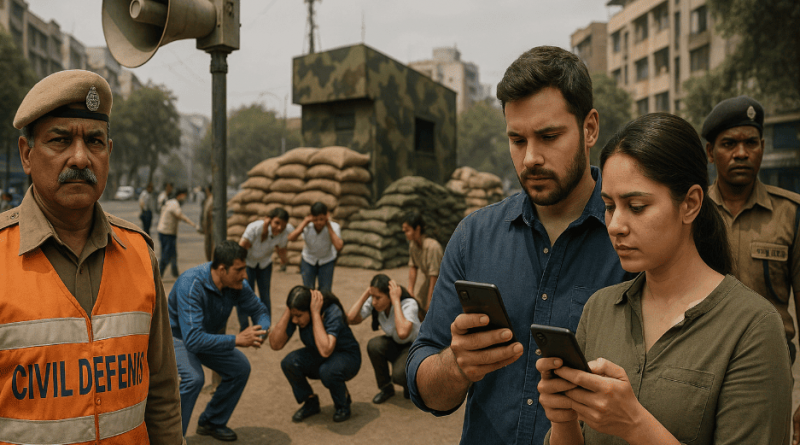India on Alert: Nationwide Defense Drills on May 7 — Here’s How You Can Help
New Delhi — India’s Ministry of Home Affairs on Monday has asked several states to conduct mock drills for items for effective civil defense on Wednesday that is 7th May, Government of India Sources.
As per internal government communications, a coordinated civil defence push will be observed across various states, particularly those considered strategically sensitive. The Ministry of Home Affairs has outlined five key measures to be undertaken during these drills:
1 – Operationalization of Air Raid Warning Sirens
2 – Training of civilians, students, etc., on civil defence protocols
3 – Implementation of crash blackout measures
4 – Early camouflaging of vital plants/installations
5 – Updating and rehearsing evacuation plans
These preparations come against a backdrop of heightened regional alertness and emerging geopolitical tremors, with official and unofficial sources alike cautioning against a complacent posture.
What Civilians Can Do: A Call to Preparedness
The civil defence exercises planned are more than just procedural. They represent the government’s acknowledgment of the complex security matrix currently surrounding India—one that could evolve into open conflict with little warning. These drills are being described by observers as “highly sophisticated information operations,” but the civic component remains central to their success.
For the average citizen, particularly those residing in border areas or strategic locations, participation need not be passive. There is a tangible role to play.
Start by contacting local authorities—especially your area’s Civil Defence Wardens or Home Guard coordinators. They will be key points of contact for information, updates, and local response planning.
Forming Civil Defence Groups
Now is the time to organise your own local civil defence teams. Recruit from your family, housing society, and trusted networks. Assign roles based on individual strengths:
1 – Physically fit individuals can assist in manual tasks such as securing physical infrastructure or helping in evacuations.
2 – Strong communicators should coordinate between community members and authorities.
3 – Children, elderly, and domestic staff can serve as discreet observers—especially effective in regions with mixed populations or near sensitive installations.
Use Signal or Telegram, not WhatsApp, for secure and resilient group communications.
Eyes on the Ground
Be proactive in monitoring vulnerabilities in your surroundings:
1 – Inspect power lines, junction/distribution boxes, telephone masts, and train tracks regularly.
2 – Keep watch on bridges, especially their cabling and access points.
3 – Observe water infrastructure closely—pipes, manholes, drains—for signs of tampering or damage.
If you live near a population of potential 0.5 front sympathisers, maintain heightened vigilance. Any unusual gatherings, altered routines, or sudden movement of unknown individuals should be documented and reported discreetly.
Housing societies should begin implementing access control now, especially in high-risk zones. Establish secure entry-exit procedures and consider forming rapid alert teams within your community.
The Strategic Outlook
There is an increasing belief in strategic circles that events could spiral into a hot war scenario in the near or medium term. While the government remains tight-lipped about timelines and intentions, preparations at all levels suggest seriousness.
But here is the critical truth: Victory will not be secured by armed forces alone. Civilians win wars too.
By remaining informed, organised, and resolutely calm, the people can act as the invisible shield that protects the nation from within. This is not a time for panic, but for purpose. Stay alert. Stay connected. And most importantly, stay committed.



